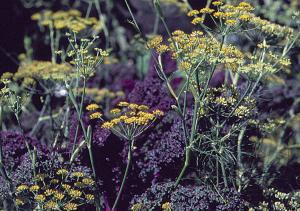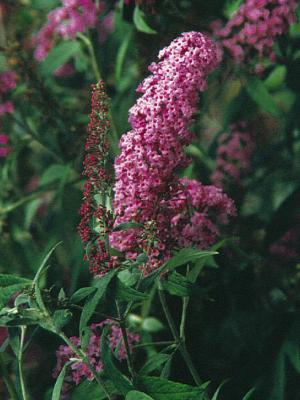By Theresa M. Forte
 |
A butterfly garden provides the ideal solution for clients who are looking for an easy to maintain, colourful, scented and ecologically friendly garden. The good news is they don't have to look like an untamed meadow to be successful. If you have any doubts about the elegant nature of such a garden, just visit the outdoor display at the Niagara Parks Commission Butterfly Conservatory, you will be impressed.
Butterflies are equally at home in humble or sophisticated surroundings so long as their basic needs are fulfilled. Butterflies, like all wild garden visitors, need shelter, space, water and food.
A beautiful butterfly garden featuring all-season interest can be planned using self-seeding annuals, easy care perennials, shrubs and trees. Include plants of varied heights so that a luxurious layered effect is created.
Trees, shrubs and tall perennial grasses will provide needed shelter while offering the homeowner privacy, layered structure and a long season of interest in the garden. Flowering plants will be most effective in attracting butterflies when they are planted in large (easily visible) groups. By including seasonal food sources, migrating butterflies will be encouraged to visit.
|
Paved pathways and strong definition along the edges of the beds will add stability to the garden and reduce overall maintenance once installed. A comfortable bench will complement the garden picture, while offering a welcome place to sit and observe the colourful flying visitors. Butterflies feed on the nectar found in two families of flowering plants. Preferred favourites include those having clusters of tiny flowers such as buddleia, sage and thyme. As well, butterflies seek out members of the daisy family such as aster, coneflower and rudbeckia. Host plants provide a home for the eggs laid by the female butterfly. These will provide the correct food for the caterpillars to eat when they hatch. Host plants include asters, milkweed and birch. For example, the Monarch butterfly will deposit eggs in the milkweed plant. Many sources recommend a wilder, fringe area planted with native plants to encourage butterflies to visit. These plants can be clustered along the back of the border or interspersed among the "proper" plants included in the plan. (One reference suggested planting the edge of the ditch leading to the drainage area, often located along the back of the garden, as an ideal location for the wilder materials). Butterflies love to sunbathe, it warms their wings for flight. (They can't fly if their body temperature is too low). Include a few flat rocks in the garden for this purpose. A saucer of fresh water will also encourage the butterflies to stay and visit. Once the garden is established, a layer of mulch will help to keep watering and weeding to a minimum. Spring bulbs planted among the mid-range perennials will add a welcome splash of colour to the early garden. The emerging foliage will provide a pleasant foil for the flowering bulbs and later conceal the foliage as it fades by late spring. Under no circumstances should pesticides be used in a garden that has been planted and designed to attract butterflies, as the chemicals will kill the desirable insects as well as the pests. No matter if the client has a suburban plot, city courtyard or country estate, a butterfly garden can be designed to provide a simple or sophisticated all-season interest feature for their property. Theresa M. Forte is a freelance garden writer and photographer based in Niagara Falls, Ont. |

